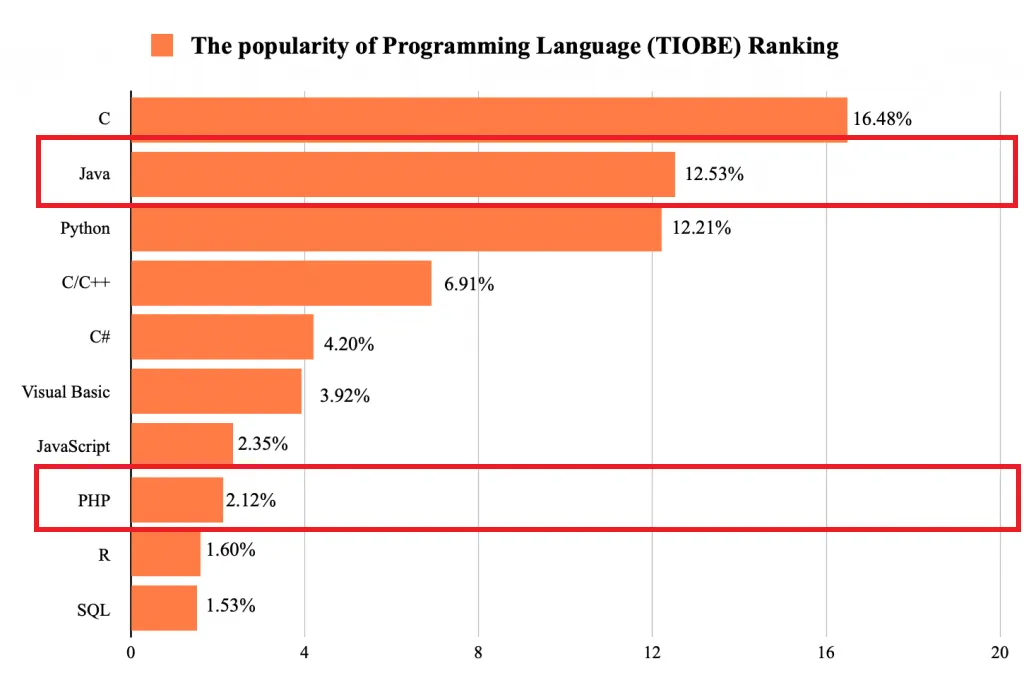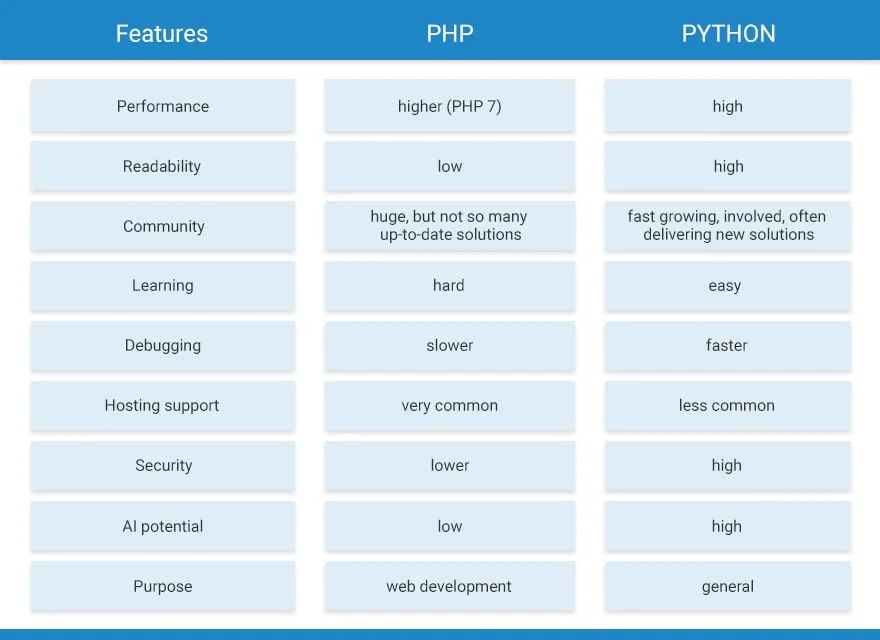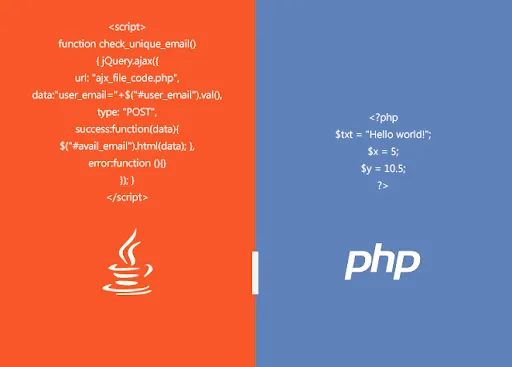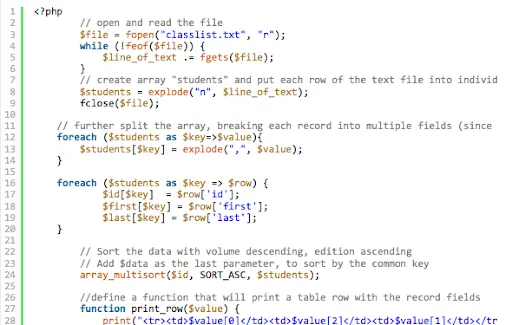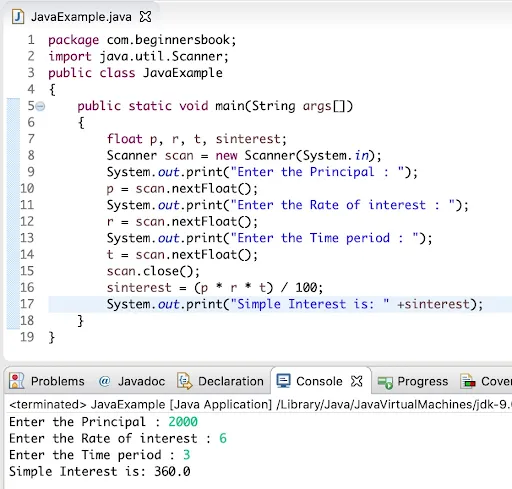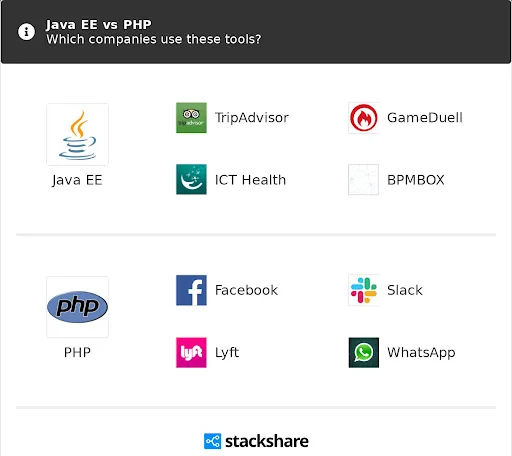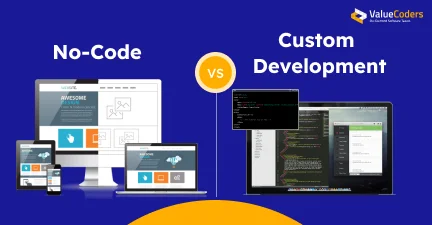It has always been admitted by coders and experts that programming language is the backbone of a software application. And! Making a wrong choice can cost you millions. Thus, in this article, we would help you understand how PHP vs. Java is battling against each other and what armors make them powerful.
PHP Vs. Java: The Statistics
Before we jump right into the comparison of PHP vs. Java, we must consider market trends and facts that contribute incredibly to making the right choice for the selection of the best programming language from PHP vs. Java.
- As of May, Java is a top programming language to be used by high-traffic sites, while PHP holds 4th position.
- 3.5% of all websites have Java as their server-side programming language.
- 79.2% of all websites are using PHP.
- 51.7% of all websites are using PHP version 7.
From the statistics, it is clear that Java is the number one programming language in terms of handling loads of users, while PHP is part of almost every website available over the web. But, to understand the difference, we need to break down each and every aspect of both programming languages. So, let’s go ahead.
Discover the Perfect Software Development Services for Your Needs
What Is Java?
Being one of the most popular programming languages, Java is a general-purpose, object-oriented programming language developed on the principle of class. It is designed in a way that has lesser implementation dependencies.
Truly, it is a computing platform for developing high-quality applications. The major perks of Java are – higher speed, security, and reliability. Thus, it is greatly used worldwide for creating applications for laptops, game consoles, mobile phones, data centers, and more.
Developed by Sun Microsystems, Java was introduced in 1995 and is known for its compatibility with almost every device, including computers, smartphones, and others. As a matter of fact, it is a high-level programming language. The compiler of Java transforms the code into bytecode, and later JVM transforms this code into machine code.
It makes Java code compatible with almost every platform except Mac. Android developers are the biggest community around the world using Java to cater to various incredible mobile app solutions and custom app development services. Google, Amazon, Uber, eBay, Netflix, Instagram are major brands using Java these days. Moreover, custom app developers also receive huge recognition for their innovation in tech with Java.
Also Read – How Good Is Java For Your Web Application Development?
What Is PHP?
PHP is the name of the most popular server-side scripting language that enables users to create static, dynamic, and web applications. PHP is an acronym to Hypertext Preprocessor now earlier referred to as Personal Home Pages.
The mechanism of PHP is simple, that is- scripts written in PHP will only be interpreted on the server having PHP installed on it. A client computer is required to access the PHP script through the web browser.
The major perk of PHP is that it can embed in HTML code and can make the web page more interactive. Besides, it also allows you to reduce the length of HTML code and make it easier to manage. Moreover, you can easily collect, process, and utilize the data using a PHP script to create output.
In 1994, it was introduced by Rasmus Lerdorf, but it was quite different from the one that we use now. The major CMSs- WordPress, Drupal, Joomla, and many others use PHP. Succinctly, PHP is an interpreted language, and interpretation takes place once only.
In short, PHP works on services that have it installed. Facebook, Slack, Tumblr, Etsy, Wikipedia are renowned users of PHP.
So, now you understand what PHP and Java actually are.
Discover the Perfect Software Development Services for Your Needs
Let’s understand how they are different from each other by an in-depth comparison between Java vs. PHP.
1) PHP vs. Java: Ease Of Coding & Speed
While Java is completely class and object-based, it includes the use of different threads to manage and process the sequences of codes efficiently and swiftly. In contrast to this, PHP has better provisions for coding and memory consumption. With PHP, coding is faster than Java, and coding an application on PHP would take less time than Java.
So, the winner of this comparison is PHP.
2) PHP vs. Java: Rate Of Performance
The performance comparison can be a little tricky, as both languages have a different foundation for code interpretation. In Java, code gets pre-compiled into bytecode, while PHP requires time to comply with bytecode for each request.
Optimization has been done in Java and PHP, and Java has shown more results in comparison to PHP. The latest version of PHP reduces memory consumption for sure, but performance is still behind Java.
Thus, the winner is Java, as it provides higher performance in code runs than PHP.
(Simple PHP Program To Read File)
3) PHP vs. Java: Stability
Well! For every application development, the stability of the programming language is one of the major aspects that make application developers think about selection. In PHP vs. Java, Java is more reliable than PHP in terms of stability.
Java fastens developers to write longer codes that lead to stability in the application and inhibit the chances of frequent crashes. That’s the reason enterprises, banks, and fintech brands consider Java more than any other programming language.
So, the winner is Java for achieving higher stability.
Step into the Arena of Success with Our Unparalleled Software Development Services.
4) PHP vs. Java: Security
Now comes the most crucial and critical point of comparison- Security. It is one of the foundation boulders of every application, especially ones having sensitive data (such as bank account details and user identity) involved.
For every organization, security is the most precious entity today; thus, it is essential that the best one win the security battle of Java vs. PHP. Here is the fact!
Security with Java is more reliable than PHP. In short, Java is more secure than PHP. It incorporates a number of built-in security features other than PHP. Thus, Java is always preferable for developing complex projects. With PHP, developers have to seek other frameworks that can infuse more security in applications.
Moreover, low-level programming can also add up the complexity in terms of security. Thus, Java is best to acquire high-grade security within the application.
So again, the winner is Java!
5) PHP vs. Java: Access To Talent Pool
When you are going to develop a website, surely finding a developer with remarkable expertise would be one of the thoughts in your head. Unlike Ruby and .Net, it is easy to find PHP developers and java full-stack developers,
Per Stack Overflow Development Survey, 38.4% of professionals are using Java, while 25.8% are using PHP. Earlier web development in java was the only way businesses can adapt to secure solutions at ease.
Here too, Java is the winner.
6) PHP Vs. Java: Cost Of Development
Java isn’t a free or open-source programming language at all, though Oracle enables you to use a number of editions of Java such as SE and EE for enterprise software development. But! You need to buy a license to use the Java programming language, and it adds to the cost of development.
In contrast to this, PHP is completely free and open-source; you don’t need to pay any license fee to use this programming language, which makes application development cost-effective with PHP. Owing to that PHP application development company gain good revenues and huge demands,
Moreover, the Java developers’ prices per hour are higher than the PHP developers’. Thus, the Java development cost will always be higher than the PHP development.
In short, PHP is a winner as it enables cost-effective development.
7) Java Vs. PHP: The Future
Programming languages are fighting cut-throat competition, and survival is the major goal. Thus, enhancements and version updates are frequently taking place. Moreover, businesses need a programming language that can stay up-to-date with the latest tech and concepts.
Every business needs to choose a programming language that can help them establish upcoming concepts in their application. In this aspect, both technologies are continuously getting enhanced and updated, Moreover, having a great community behind them to boost the potential of PHP and Java.
PHP is becoming greatly compatible with website application development. At the same time, Java is being known for its popularity and rich tools. It is hard to tell which one is best as both have their own set of perks. But! The Future is going to be competitive while PHP would go along the path of making website development seamless and secure, and Java would show its potential in the usage of AI, ML, and IoT.
Also Read: Java vs .Net vs Python: Which Is Best?
8) PHP Vs. Java: Which One To Choose?
Both programming languages have their own instances when it comes to picking them for application development. From above, it is clear that if you want to create an enterprise application( banking solution or fintech solution) packed with incredible security, then you must choose Java.
If you want to create a simple website such as eCommerce, blogging, and business-oriented website, you can connect with top PHP app developers, as it is cost-effective and swift than others.
Here is a categorization you can choose either of them in different instances.
When To Use Java?
- Android applications
- Web applications development for solutions like Gmail, online forms, Google Sheets, shopping carts
- Enterprise applications used by schools, banks, governments, charities, etc.
- Web servers Development such as Apache Tomcat, Apache HTTP server, Rimfaxe Web Server (RWS). Resin, Adobe JRun
- Software tool Development such as Eclipse, NetBeans IDE, IntelliJ Idea.
When To Use PHP?
- Websites Development like Yahoo, iStock Photo, Flickr, MailChimp
- ECommerce apps penCart, UberCart, ZenCart,
- Scripting DevOps tools, automation
Here is a small video to give you an immediate overview of “Java vs. PHP”:
Wrapping Up
It is hard to tell a winner from PHP vs. Java, but the fact is both of these technologies are remarkable when it comes to developing applications for different purposes. So, choose the tech stack as per your project.
However, if you are not sure which one to choose, you can also connect with a custom web application development company, which is an expert in both the technologies and can guide you to pick the best in specific product requirements.


